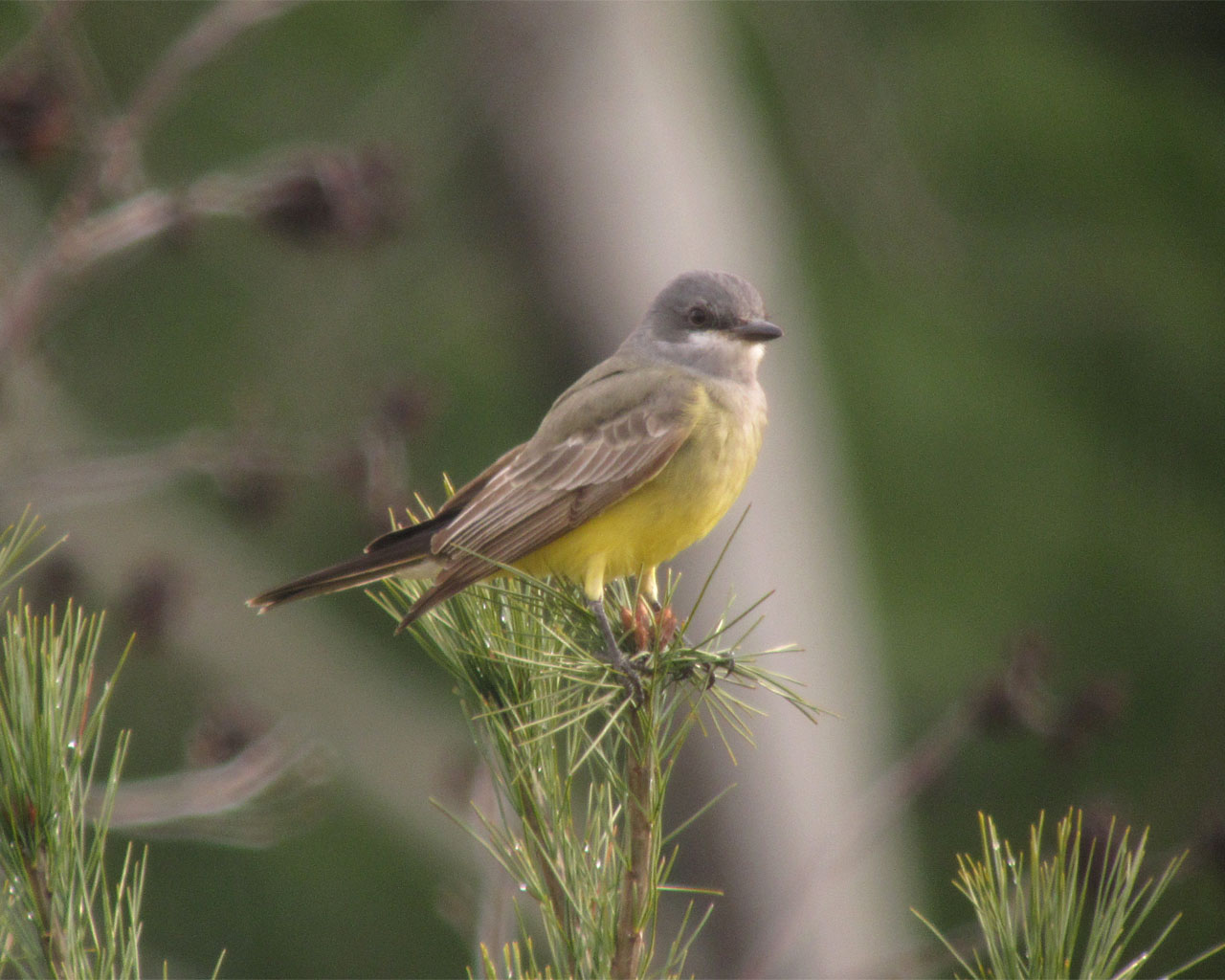
27 November 2011. Cherry Hill Reservoir, West Newbury. Photo by Eric Nielsen.
5 records
| MARC number | Decision | Species | # | Location | County | Arrival | Departure | Observers | Report |
|---|---|---|---|---|---|---|---|---|---|
| 1962-002 | A | Cassin's Kingbird | 1 | Eastham Town Hall | Barnstable | 10/21/1962 | 10/21/1962 | W. Bailey, collected by Clem | 13 |
| 2002-034 | A | Cassin's Kingbird | 1 | White Birch Campground, Whately | Franklin | 11/1/2002 | 11/2/2002 | R. Packard et al. | 7 |
| 2011-099 | A | Cassin's Kingbird | 1 | Cherry Hill Reservoir, West Newbury | Essex | 11/25/2011 | 1/10/2012 | Jim Berry†, ph. Erik Nielsen, ph. Jeff Offermann, ph. B. Zaremba | 18 |
| 2022-039 | A | Cassin's Kingbird | 1 | Tuckernuck Island (restricted access) | Nantucket | 10/7/2022 | 10/7/2022 | Richard Veit* (ph), Simon Perkins* | 27 |
| 2022-049 | A | Cassin's Kingbird | 1 | Community Farm Institute at the Walter F. Ballinger Educational Community Farm | Nantucket | 11/3/2022 | 11/3/2022 | Chris Duffy* (ph), Burton Balkind (ph) | 27 |
Cassin’s Kingbird is a common flycatcher of pinyon-juniper woodlands, riparian corridors, and other wooded habitats in the western United States, breeding from sw. Nebraska and e. Montana south to central Mexico and west to the Pacific coast and northern Baja California. It is migratory, and withdraws from most of the country except southern California in winter. It occurs far less regularly in the East than Western Kingbird (Tyrannus verticalis), with just a handful of records east of the Great Plains, almost all of those from the immediate East Coast. See the eBird map and zoom in to see specifics of Massachusetts records.
The first state record, at Eastham, was amazingly “in the presence of four Western Kingbirds” (Veit and Petersen 1993). Given the lack of records from anywhere else in New England, Massachusetts has had more than its fair share of records, surely the result of a long history of ornithology in the state in combination with excellent geography for western strays.
WHERE TO LOOK IN MASSACHUSETTS: Vagrant Cassin’s Kingbirds could turn up almost anywhere, the immediate coast in fall (Oct-Nov) is probably the best bet. Some of the eastern records, including one from Nova Scotia, have been from mid-summer, a season when even Western Kingbird would be exceptional. Clearly any yellow-bellied kingbird in the East should be looked at with care, but maybe summer ones especially so.
STATUS IN THE EAST: The four records from Massachusetts comprise the lion’s share of eastern records. Other records in the East include:
One (ph.) at Montauk, NY, 13 Oct 2007 (NYSARC 2009)
One (ph.) at Little Harbour, Shelbourne, Nova Scotia, 16-18 July 1999
Two records from Ontario are cited by NYSARC (2009), but there are no other confirmed eastern records north of Florida (where there are a number of records, mostly of wintering birds).
IDENTIFICATION NOTES: Yellow-bellied kingbirds are often reflexively identified as Western Kingbirds and existing identification material can sometimes be misleading. The bird discovered at Cherry Hill Reservoir was initially identified as an Ash-thorated Flycatcher, and then as a possible Great Crested. When relocated a couple weeks later, it was identified as a Western Kingbird, and although images were obtained that showed key field marks, confusion continued for a day or two as birders flocked to the reservoir and relocated the bird. The initial identification as a Western emphasized the white edges to the rectrices, the blackish tail, and lack of a dark throat, the latter apparently an interpretation of the illustration in The Sibley Guide to Birds that suggests that a white malar–rather than a white throat–is the key field mark.
Cassin’s Kingbird should be reliably identifiable using a combination of field marks. However, the tail can be edged with pale and is otherwise blackish (not as black as Western Kingbird, but certainly very dark) and that the throat is typically all white, not just the malar. The key field mark is the degree of contrast between the dark head/cheek/chest and the white throat, with the pale throat (and malar) set off sharply in Cassin’s Kingbird and typically being much less well-defined in Western Kingbird. The buffy tail tip is a good indicator for Cassin’s, but can be hard to see, especially on a worn tail. The buff color can extend up along the sides of the tail as well. Cassin’s is also much darker above than Western, with an olive-gray back versus the more grayish or greenish-gray back of Western. One good general rule is to look careful at kingbirds with very bright yellow bellies; many Western Kingbirds have very pale yellow bellies, but Cassin’s, Tropical, and Couch’s almost always have very rich yellow underparts (matched by some Westerns, but not all).
Calls are also distinctive, with Western Kingbird uttering singled or repeated ‘kip’ notes and Cassin’s Kingbird calling most frequently with a drawn out, hoarse ‘breeer’ or ‘ki-breeer’. The 2011 Essex County bird was heard to give several ‘kip-breeer’ calls.
REFERENCES
Sibley, D.A. 2000. The Sibley Guide to Birds.
Veit, R. R. and W. R. Petersen. 1993.Birds of Massachusetts.
